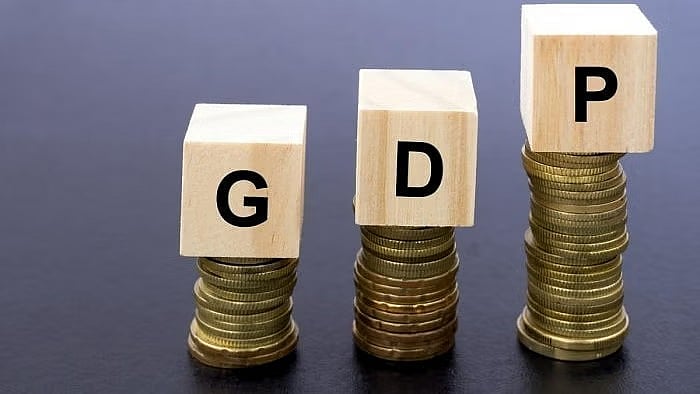
Representative image of GDP.
Credit: iStock Photo
The Indian equities market is poised to sustain its positive momentum this week, underpinned by strong domestic macroeconomic factors and coordinated fiscal and monetary support. Key catalysts include the announcement of GST 2.0 reforms, a sovereign rating upgrade, RBI’s liquidity support, a monsoon-driven consumption revival, and the forthcoming festive season demand. Market participants will remain attentive to developments regarding the US 25% secondary tariffs on Indian goods, to be effective on August 27, 2025, as any deferral could significantly bolster investor confidence. Additionally, upcoming GDP data releases from both India and the US will be closely monitored to assess broader market sentiment.
Last week, Nifty 50 ended with gains of 239 points at 24,870, up 0.97%, continuing its positive momentum driven by strong domestic cues. The broader market indices also soared in the green as Nifty Midcap100 and Nifty Smallcap100 were up 2% and 2.12% respectively. Amongst sectors, Auto and FMCG formed a part of the top gainers as their indices were up 5% and 2% respectively, largely driven by the approval of the new GST reforms.
Following the announcement of second-gen GST reforms by the Indian Prime Minister, the Group of Ministers (GoM) approved scrapping the existing four-rate GST structure in favor of a simplified dual-rate regime of 5% and 18%. This policy shift is expected to benefit sectors such as autos, cement, consumer durables (ACs, electronics), FMCG, hotels with (sub-₹7,500, room rate), retail footwear, logistics, insurance (subject to health premium cuts), and quick commerce.
The RBI’s August MPC minutes indicate a cautiously optimistic stance on inflation, highlighting expectations of a near-term decline driven by easing food prices. However, the committee maintains a prudent approach, closely monitoring inflation transmission and potential upside risks before considering any further policy action.
The July FOMC meeting saw a rare split, with two Fed governors advocating a 25 bps rate cut—the first such dissent since 1993. This development, coupled with a softer US jobs report, has reinforced market expectations of a potential rate cut in the September meeting, a move that could have positive spillover effects for emerging markets including India.
On the sectoral front, we are positive on hospital companies in India, as they maintained a stable momentum in 1QFY26, registering 16.5% year-on-year revenue growth. EBITDA growth moderated slightly to 20.5%, reflecting capacity additions and improved operational efficiency. Over FY25-27, listed hospital companies plan to add 14,000 beds, a 35% increase over current capacity of 39,000 beds. With aggregate occupancy at 59%, there is ample room for further improvement, which bodes well for sustained sector performance.
Recent diplomatic engagements have strengthened India’s geopolitical and economic outlook. China’s agreement to ease export restrictions on critical inputs such as fertilizers, rare earths, and tunnel boring machines, during border talks will ease supply bottlenecks. Meanwhile, India-Russia discussions in Moscow focused on boosting bilateral trade in sectors like agriculture, pharma, and textiles and expanding cooperation, underscoring India’s growing geopolitical partnerships.
The announcement by US President Donald Trump to double tariffs on Indian goods to 50%, effective August 27, 2025, has introduced near-term uncertainty, though it is primarily geopolitically driven. While the move poses a potential headwind, investor sentiment remains cautiously optimistic amid signs of progress in US-Russia peace negotiations, raising hopes of a rollback. On the domestic front, the Indian government’s temporary exemption of import duty on cotton (August 19–September 30) offers timely support to the garment sector, helping offset external pressures and sustain competitiveness.